The following is the latest information from the federal government as of 2:45 p.m. on Tuesday, July 21.
Public Health Emergency Declaration
The federal government’s declaration of a COVID-19 public health emergency expires this Friday, July 24. Like many other provider groups across the country, NASH has urged the administration to renew this declaration. The declaration is so important because it led directly to the many regulatory flexibilities, especially through Medicare, that have enabled hospitals and health care providers to respond so effectively to the COVID-19 pandemic. If the declaration expires, so do those flexibilities. Providers everywhere now await a decision from the White House.
Department of Health and Human Services
As announced last week, HHS has begun making its second distribution of CARES Act Provider Relief Fund grants to hospitals in COVID-19 high-impact areas (“hotspots”) – that is, hospitals that have cared for especially high numbers of COVID-19 patients. According to the agency’s news release,
The second round of funding…was based on a formula for hospitals with over 161 COVID-19 admissions between January 1 and June 10, 2020, or one admission per day, or that experienced a disproportionate intensity of COVID admissions (exceeding the average ratio of COVID admissions/bed). Hospitals will be paid $50,000 per eligible admission.
HHS has distributed approximately $8.5 billion to such hotspot hospitals so far; a list of recipient hospitals can be found through a link in this HHS news release. At the same time, HHS has acknowledged that the list is incomplete and is still reviewing COVID-19 admissions data from other hospitals with the intention of distributing another $1.5 billion to additional hotspot hospitals that have not yet received any funding through this latest distribution.
- In June HHS announced the opening of an application period and plans to distribute approximately $15 billion to eligible providers that participate in state Medicaid and CHIP programs that had not yet received a payment in the $50 billion Provider Relief Fund general distribution. Since that announcement HHS has hosted a number of webinars for providers and provider organizations to answer questions and help those eligible through the application process. HHS’s Health Resources and Services Administration has created a fact sheet explaining the application process. To ensure that eligible Medicaid and CHIP providers, including dentists, have the opportunity to apply for a funding distribution, HHS has extended the application deadline to August 3, 2020. This, too, is described in the HHS news release.
- HHS has updated its Provider Relief Fund FAQ. Additions include seven changes marked “7/17/2020” and one change dated “7/20/2020.” One of the changes addresses new providers in the general distribution of Provider Relief Funds; six address the distribution of Provider Relief Funds to Medicaid and CHIP-only providers; and one notes a change in the deadline for potential participants in a Provider Relief Fund distribution to dentists. Providers should review these changes carefully.
- HHS’s Office of Civil Rights has issued guidance reminding recipients of federal financial assistance that they must comply with applicable federal civil rights laws and regulations that prohibit discrimination on the basis of race, color, and national origin in HHS-funded programs during the COVID-19 emergency. The HHS bulletin focuses on recipients’ compliance with Title VI of the Civil Rights Act of 1964 (Title VI). Go here to see a news release describing HHS’s actions and here to see the bulletin “Civil Rights Protections Prohibiting Race, Color and National Origin Discrimination During COVID‐19.”
Centers for Medicare & Medicaid Services
CMS has updated its document “COVID-19 Frequently Asked Questions (FAQs) on Medicare Fee-for-Service (FFS) Billing” to incorporate changes in cost report filing deadlines announced two weeks ago (see pages 94 and 95) and to address the question of whether skilled nursing facilities or hospitals can accept local, state, or federal resources to help with the COVID-19 emergency and still bill Medicare (see page 133).
- CMS has updated the MLN Matters article “Medicare Fee-for-Service (FFS) Response to the Public Health Emergency on the Coronavirus (COVID-19)” with updated CDC guidelines for nursing home residents and patients and an update on applying the skilled nursing facility benefit period waiver.
CMS COVID-19 Stakeholder Calls
CMS hosts recurring stakeholder engagement sessions to share information related to the agency’s response to COVID-19. These sessions are open to members of the health care community and are intended to provide updates, share best practices among peers, and offer attendees an opportunity to ask questions of CMS and other subject matter experts.
CMS COVID-19 Office Hours Calls
Tuesday, July 28th at 5:00 – 6:00 PM Eastern
Toll Free Attendee Dial In: 833-614-0820; Access Passcode:1492795
Audio Webcast link: go here.
Lessons from the Front Lines: COVID-19
Friday, August 7th at 12:30 – 2:00 PM Eastern
Dial-in number, access code, and web link all to be announced later.
Nursing Homes Call
Wednesday, July 22nd at 4:30 – 5:00 PM Eastern
Toll Free Attendee Dial-In: 833-614-0820; Access Passcode: 1143564
Audio Webcast Link: go here.
Dialysis Organizations Call
Wednesday, July 22nd at 5:30 – 6:00 PM Eastern
Toll Free Attendee Dial-In: 833-614-0820; Access Passcode: 7692208
Audio Webcast Link: go here.
Nurses Call
Thursday, July 23rd at 3:00 – 3:30 PM Eastern
Toll Free Attendee Dial-In: 833-614-0820; Access Passcode: 7971869
Audio Webcast Link: go here.
Conference lines are limited so CMS encourages interested parties to join via audio. To listen to the audio files and read the transcripts for the COVID-19 Stakeholder calls, visit CMS’s Podcast and Transcripts page.
National Institutes of Health
The NIH has updated its guidelines for treating COVID-19 with remdesivir.
Federal Reserve System
- The Federal Reserve Board has modified the Main Street Lending Program to provide greater access to credit for non-profit organizations such as educational institutions, hospitals, and social service organizations. Go here to see a Federal Reserve news release explaining the policy change and learn more from the documents Nonprofit Organization Expanded Loan Facility Term Sheet and its Nonprofit Organization New Loan Facility Term Sheet.
Department of Labor
- The Department of Labor has published guidance for workers and employers on how the protections and requirements of the Fair Labor Standards Act, the Family and Medical Leave Act, and the Families First Coronavirus Response Act affect the workplace as workplaces reopen amid the coronavirus pandemic. These materials include a Fact Sheet for Employees, a Fact Sheet for Employers, and an FAQ about paid sick and expanded family and medical leave under the Families First Coronavirus Response Act. It also has produced two guidance posters, one for federal workers and one for all other employees, that fulfill notice requirements for employers obligated to inform employees of their Families First Coronavirus Response Act rights; an FAQ about posting requirements; and simple Quick Benefits Tips to determine how much paid leave the Families First Coronavirus Response Act permits workers to take.
Food and Drug Administration
The FDA reissued an emergency use authorization (EUA) for a COVID-19 diagnostic test that is now authorized for use with pooled samples containing up to four individual upper-respiratory swab specimens collected under observation. It is the first such test authorized for the pooled samples approach, which involves combining samples from multiple people and then only testing those people individually if the batch comes back positive. See an FDA news release about this practice.
- The FDA announced that it is extending the enforcement discretion policy for certain human cell, tissue, and cellular and tissue-based products. As a result of the challenges presented by the COVID-19 public health emergency, the agency is extending the enforcement discretion policy for an additional six months, through May 2021.
- The FDA implemented and issued guidance intended to help expand the availability of transport media used to transport certain clinical specimens for testing during the COVID-19 public health emergency. The FDA also posted an FAQ on the development and use of transport media during the COVID-19 public health emergency.
- Last week the FDA closed its COVID-19 industry hotline and is now providing support for industry and laboratory questions about COVID-19 and medical devices through the directory Contacts for Medical Devices During the COVID-19 Pandemic.
- On July 22, 2020 at 12:15 pm – 1:15 pm (eastern), the FDA will host a virtual Town Hall for clinical laboratories and commercial manufacturers that are developing or have developed diagnostic tests for COVID-19. The purpose of this Town Hall is to help answer technical questions about the development and validation of tests for COVID-19. The FDA will hold another such virtual Town Hall on July 29, 2020 at 12:15 pm (eastern). Registration is not necessary. Interested parties can dial into the call at 888-455-1392 and use conference number RWXW1462599 and passcode 7068896. The FDA encourages interested parties to dial into the call 15 minutes before its scheduled start. To view the slide presentation during the webinar, go here.
- The FDA has issued EUAs for four new commercial diagnostic tests for COVID-19. Find them here, here, here, and here.
- The FDA has issued EUAs for two new commercial serology tests for COVID-19. Find them here and here.
Centers for Disease Control and Prevention
Some U.S. stockpiles include N95 filtering facepiece respirators that have exceeded their manufacturer-designated shelf life. The CDC has published information about the use of such devices.
- The CDC has updated its interim guidance for health care providers and public health officials managing persons with COVID-19 under home isolation and the conditions under which such isolation should be ended.
- The CDC has updated its guidance on the length of isolation and precautions for adults with COVID-19. This update incorporates recent evidence to inform the duration of isolation and precautions recommended to prevent transmission of COVID-19 to others while limiting unnecessary prolonged isolation and unnecessary use of laboratory testing resources.
- The CDC has updated its biosafety guidelines for handling COVID-19 specimens.
- The CDC has updated its summary of considerations and recommendations regarding testing health care personnel for COVID-19.
- The CDC has updated its overview of testing for COVID-19 with the new recommendation that except for rare situations, a test-based strategy is no longer recommended to determine when an individual with a COVID-19 infection is no longer infectious.
- The CDC has updated its testing guidelines for nursing home residents and nursing home health care personnel.
- The CDC has updated its guidance on when to wear gloves for protection against COVID-19.
- The CDC has updated its guidance on who should wear masks and when they should wear them.The CDC has updated its guidance on laboratory testing for COVID-19.
- The CDC has updated its directions on how to report COVID-19 laboratory data.
- The CDC has updated its information about the implementation of COVID-19 data reporting by states.
- The CDC has updated its guidance on strategies for optimizing supplies of personal protective equipment.
- The CDC has updated its COVID-19 clinical guidance for pediatric providers.
Federal Funding Opportunities for Hospitals
- NASH has prepared a document that collects and presents in one place the various new federal funding opportunities for hospitals resulting from legislation addressing the COVID-19 public health emergency. Find that document here.
To receive this daily update directly, sign up for our mailing list at info@safetynetalliance.org.)

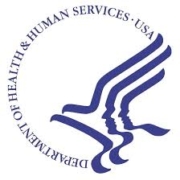 As announced last week, HHS has begun making its second distribution of CARES Act Provider Relief Fund grants to hospitals in COVID-19 high-impact areas (“hotspots”) – that is, hospitals that have cared for especially high numbers of COVID-19 patients. According to the agency’s news release,
As announced last week, HHS has begun making its second distribution of CARES Act Provider Relief Fund grants to hospitals in COVID-19 high-impact areas (“hotspots”) – that is, hospitals that have cared for especially high numbers of COVID-19 patients. According to the agency’s news release,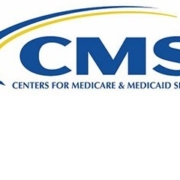 CMS has updated its document “COVID-19 Frequently Asked Questions (FAQs) on Medicare Fee-for-Service (FFS) Billing” to incorporate changes in cost report filing deadlines announced two weeks ago (see pages 94 and 95) and to address the question of whether skilled nursing facilities or hospitals can accept local, state, or federal resources to help with the COVID-19 emergency and still bill Medicare (see page 133).
CMS has updated its document “COVID-19 Frequently Asked Questions (FAQs) on Medicare Fee-for-Service (FFS) Billing” to incorporate changes in cost report filing deadlines announced two weeks ago (see pages 94 and 95) and to address the question of whether skilled nursing facilities or hospitals can accept local, state, or federal resources to help with the COVID-19 emergency and still bill Medicare (see page 133).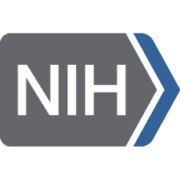 The NIH has updated its
The NIH has updated its 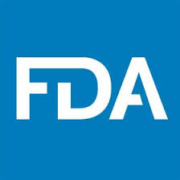 The FDA reissued an emergency use authorization (EUA) for a COVID-19 diagnostic test that is now
The FDA reissued an emergency use authorization (EUA) for a COVID-19 diagnostic test that is now 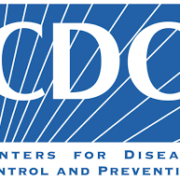 Some U.S. stockpiles include N95 filtering facepiece respirators that have exceeded their manufacturer-designated shelf life. The CDC has published
Some U.S. stockpiles include N95 filtering facepiece respirators that have exceeded their manufacturer-designated shelf life. The CDC has published 